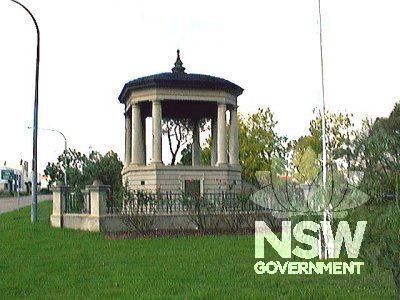| The present-day Victoria Park, St Marys was originally laid out as a Town Square in a village subdivision known as O’Connell’s Estate of 1842. For some decades it was used as a camping ground for travelling bullock teams driving herds of cattle down from the plains beyond the Blue Mountains to the meatworks near Sydney. The area was also used during the 1850s by teams heading to the goldfields, with 30-40 teams crowding the Square. In 1856 a Sydney Solicitor named Andrew McCulloch bought a portion of the O’Connell Estate which included Victoria Park (formerly Square) which was then sold in 1872 to James Hackett. However, many of the leading townsmen objected to the private sale and five trustees were appointed to look after the public’s interest in the Square. The case went to court and the Supreme Court found in favour of the people. The struggle to keep their Square had developed a camaraderie among the older men of the town which led to the formation of “The Old Buffers” fraternity, with reunion cricket matches and dinners. The Square was enlarged by a local tanner, Alfred Alcock in 1892 and gazetted as a Public Park with the Minister of Public Works vested as Trustee. When St Marys Municipal Council was formed the Square was placed under municipal control. Holiday sports were regularly held on it, and in May 1894 the Square was the venue for the celebration of Queen Victoria’s birthday. The Soldiers Memorial in the Park was erected in October 1922 as a combined bandstand and memorial with honour boards recording those who fell in World War I. It was built between the old wooden pavilion and the Great Western Highway. Two artillery pieces had been presented to the Committee to be placed near the memorial, a machine gun and an 18 pounder. It is said that the machine gun disappeared early on and the 18 pounder is said to have been removed by Penrith Council when the Park was redesigned during the 1960s-1970s by Professor Peter Spooner. The old timber grandstand was demolished in 1926 and a new brick Coronation Grandstand was built in 1936 along the Pages Road frontage. |
 |
||||||||||||||||||||||||||
|
  |
